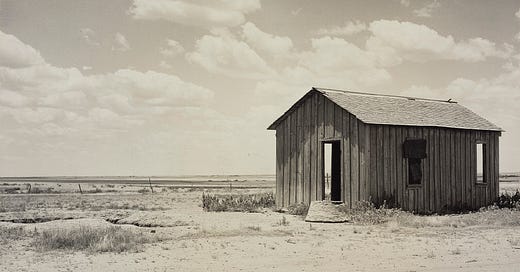There's an interesting section in Patrick Stewart's memoir where he talks about growing up in poverty in the 1940s. His family had bath night. They all bathed in the same water, once a week. During those earlier times, it was common to use that rancid bathwater one last time to feed any animals you had, or to water your garden or crops. If you're wondering what the future is going to look like, it's going to look a lot like that. There's a good chance that hot showers will not live in your future. They'll become a luxury for the rich.
That's how things already work in many parts of the world.
We're going to run out of water.
It's not going to happen like a dystopian disaster movie. It's going to be steady and grinding. Global demand for water will outgrow our supply by 40 percent before the end of the decade. By 2050 or sooner, 5 billion people will face water shortages. That's going to include us.
It's already happening in some places.
My family got a little taste of the future a couple of years ago when our water line broke. We went without running water for a week. Fortunately, we had enough stored water to get us through. We learned how to function the way people did in the past, with tubs, pans, and buckets.
If you want a preview of what's coming for many places around the world, look at Mexico City. According to a recent piece in Bloomberg, they managed to avert a total crisis by overhauling their water use. Still, "in a normal year, 21 percent of all Mexico City residents who have water pipes receive water only one to three days a week," while "80 percent of low-income residents with water pipes don't receive water daily." Infrastructure problems have exacerbated recurring drought, depleting their most common water sources.
In cities like Baton Rouge and New Orleans, saltwater intrusion has become an annual menace as drought afflicts the Mississippi River every year. Severe storms and floods routinely knock out water treatment plants now, leading to water shortages that last for weeks or months. The water that does come is often contaminated and unsafe to drink.
Hence "boil water" notices.
A 2022 piece in The New Yorker delved into the "water wars" hitting suburbs in Arizona, where developers are continuing to build McMansions in the desert with no viable plan for ensuring access to drinking water. Many residents there are paying top dollar to have it trucked in from other cities, and those cities are starting to get a little... angry about it. The entire southwest is heading into a megadrought. As engineers and geologists have made clear, that region could never have supported the amount of development Americans have pursued there.
Now it's coming undone.
Most Americans never think about where their water comes from. They use 2-3 times as much as the rest of the world, mostly on things like laundry and lawn care. They assume it'll always be there.
One day, it won't.
I've spent a few years trying to figure out what we would do if we wound up in a disaster or long-term crisis where we didn't have access to drinking water. Here's what I've come up with:





